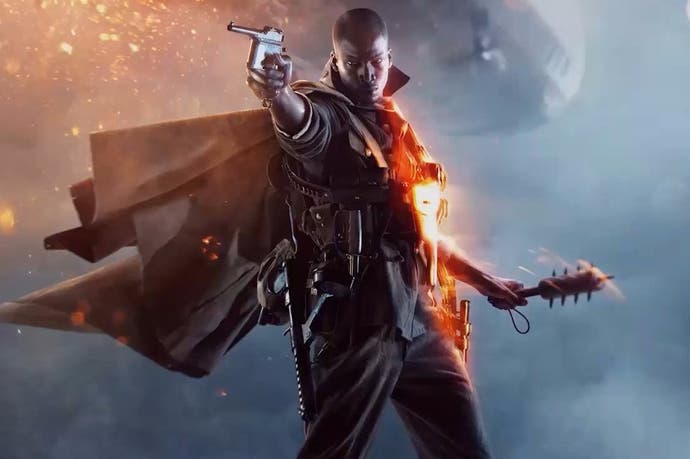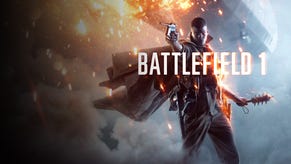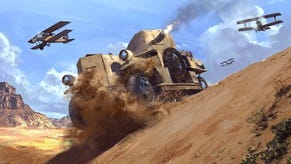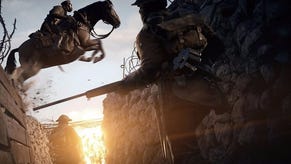Digital Foundry: Hands-on with console Battlefield 1
The full technical lowdown on the closed alpha, with bonus PC comparisons.
Announced just two months ago, Battlefield 1 is now available to select users in alpha form across all three major gaming platforms. In typical DICE fashion, what we have here feels like a genuine alpha test as opposed to a marketing demo so of course, you can expect some rough edges. We've spent time with the PC version already but, now that the console version is out in the wild, we've been able to put all three versions to the test. The results are certainly interesting.
The key discussion point surrounding this alpha is one of performance - Battlefield 1 targets 60 frames per second on both consoles just like the last three DICE titles, but in its current form, it's not quite there. There are two modes in this alpha - conquest and domination - and each one offers a very different performance profile. Domination focuses on a smaller, infantry based skirmishes. Limited to just 24 players, we found that both consoles had little difficulty hitting and maintaining the target frame-rate. Conquest, on the other hand, is a very different story, calling to mind the performance challenges faced by the previous Battlefield titles: BF4 and Hardline.
Focusing on large scale 64-player battles with lots of destruction, Conquest is the heart of Battlefield, and also the most demanding on hardware. At this stage in development, neither console is able to maintain a stable level of performance in this mode. Moving across the battlefield with light combat is enough to incur dips into the 40s while the busier sections can drop into the 30s - especially on PlayStation 4. While the two are very similar in terms of performance, it's clear that Sony's platform is currently the one struggling the most with frame-rate - and of course, it's the PS4 that has the lower level of CPU performance.
There's no reason to feel disappointment just yet - the important thing to remember here is that DICE has a real history of releasing less than optimal alpha versions of its games while following up with remarkably polished final code. Last year's Star Wars Battlefront was shown off at E3 running on PlayStation 4 with an average frame-rate coming in around 45fps. By the time it was released, the team had managed to reach a near perfect 60fps update. Keeping this in mind, there's every reason to think that Battlefield 1 will reach its objective come release time, or at least hand in a much stronger showing.
At the same time, this is the first full-on 64 player multiplayer console game DICE has developed since Battlefield 4. Neither BF4, nor the Visceral developed follow-up Battlefield: Hardline, managed to deliver a stable level of performance in the busiest game modes. These large dynamic maps are a huge drain on CPU resources and that's something neither console can spare. With this in mind, we're extremely interested to see if DICE can find a creative way to overcome these issues and deliver performance similar to Battlefront, which topped out its player count with 40 participants.
If we look beyond performance, it's standard Frostbite fare on consoles - Xbox One operates at 720p while PS4 is at 900p. It's been the same since Battlefield 4 launched on consoles but at this point, the situation has improved thanks to DICE's excellent temporal anti-aliasing. While the image remains soft on both platforms, TAA manages to clean things up and eliminates the severe aliasing that was present in previous Battlefield games. Provided you game from a decent viewing distance, the loss in clarity isn't a huge problem.
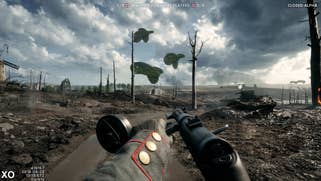

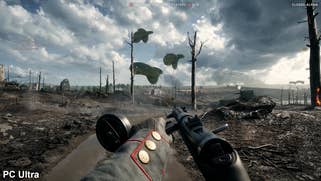

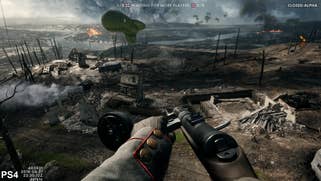
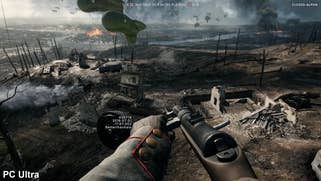

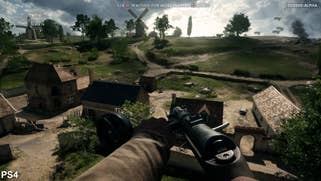
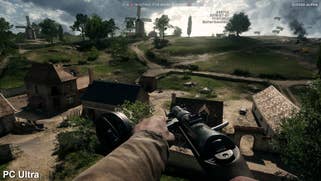


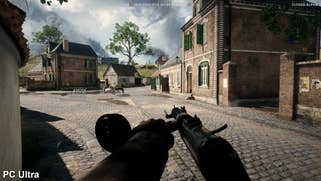
The alpha release of the game has also enabled us to spend even more time with the PC version. In our initial look at the game we surmised that Battlefield 1 might be utilising Directx 12. While we still believe that DX12 support will be included in the final game, it was never present in the alpha build after all. The option is now more clearly labelled and indicates proper DX12 support, but the game runs in DX11 regardless of whether or not this is enabled. We've even gone so far as to mess around with the game's configuration files but have continued to come up short. With the option included in the menu, however, it's difficult to believe that DX12 won't be coming to the PC version.
When actually comparing the console versions against the PC version it's clear that we're seeing results similar to Battlefront. The console versions enjoy the benefits of certain high settings available on PC including post-AA, the use of displacement maps, ambient occlusion, and motion blur. In motion, the game looks very similar on all three platforms.
At the same time, we see distant LODs toned down on consoles to the point where, in Conquest, the setting falls below the lowest possible setting on PC. Beyond that, texture filtering is pared back on consoles while screen-space reflections are cut back or absent in certain scenes. While this sounds grim on paper, it still looks solid on both platforms - even if it's clear that the PC version has a significant advantage in certain areas.
There is one area where the console versions always felt more polished - the user interface. Since Battlefield 3, the series has relied on Battlelog - a browser based social networking service designing for Battlefield and Medal of Honor. This approach wasn't necessarily bad per se, but it did feel somewhat disjointed in the end as all server selection and pre-game load outs were managed from a web browser rather than the game itself.
This time, Battlefield 1 is launching with an entirely new interface built right into the game while both Battlefield 4 and Hardline are being updated as well. It was an interesting experiment but we definitely prefer the new in-game interface.
Being able to play with the alpha version at on our own hardware also enabled us to see how it runs on a less powerful machine. While the E3 demo PCs used GTX 1080 graphics cards, we played the game on a GTX 970 instead. The difference is dramatic, but it's still possible to enjoy the game at 1080p60 using a mix of high and ultra settings, and even 1440p is quite playable on this more mainstream level of hardware. As with the console version, the game is still very much in development, but we're expecting it to run well on a variety of hardware. When the game launches, we'll test it across a wider range of graphics hardware.
So that's where we're at with Battlefield 1 - it's shaping up to be a very handsome looking game on all systems, with performance on 64-player modes the only concern right now. However, after experiencing the massive improvements between pre-release and final with the last two DICE games, we're interested to see if the team can pull it off for a third time. With the massive player counts and destructible environments, this could prove to be the ultimate challenge but we remain hopeful. We'll continue to follow the progress of the game as closely as we can, and hopefully we'll see some details on potential PlayStation Neo enhancements once the new console has been fully announced.
